Your cart is currently empty!

Taking the guesswork out of Greek cooking…one cup at a time
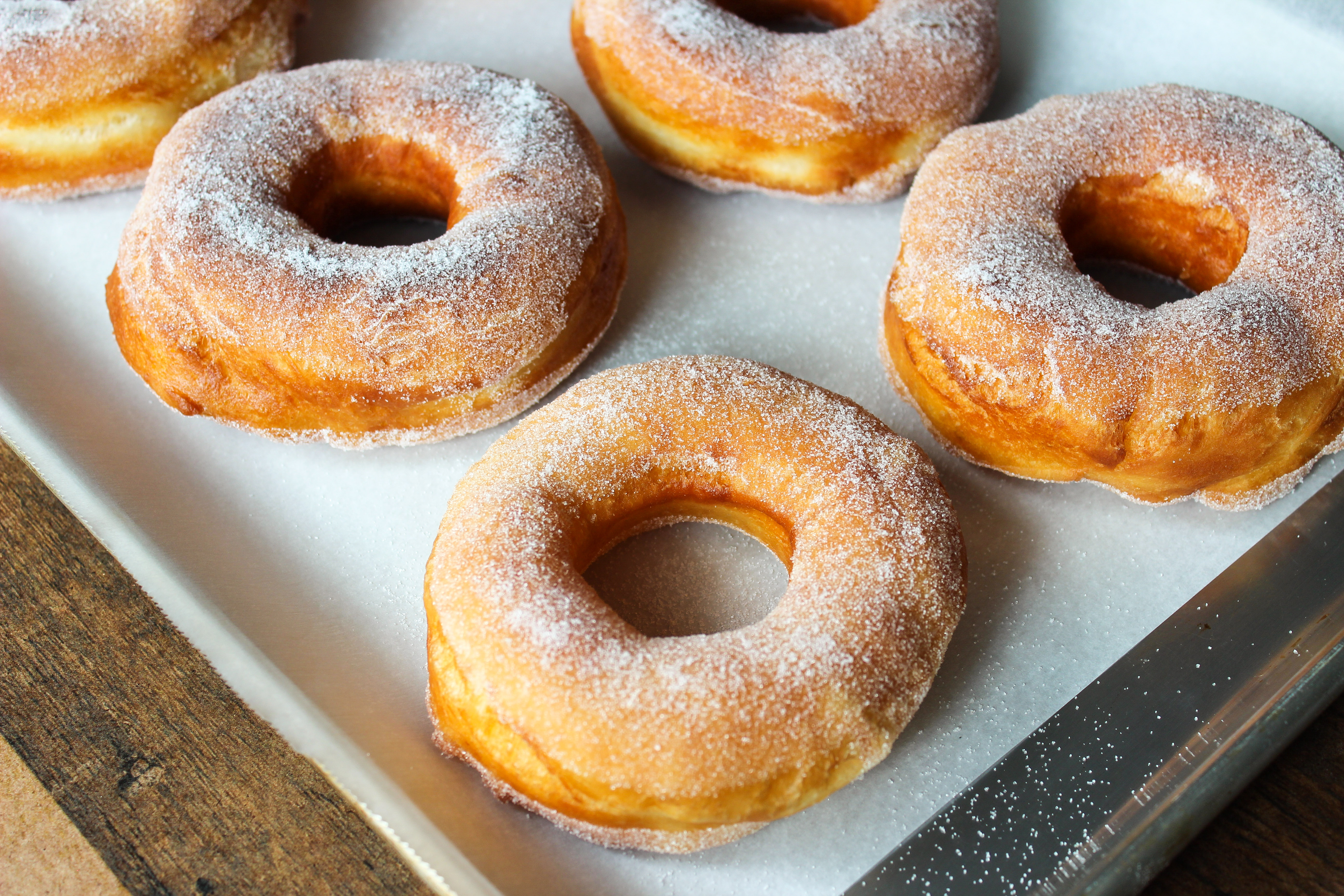
A traditional Greek doughnut: large, light, and perfectly sweet
Do you know how excited we are to share this recipe with you? We’re not sure you can fully appreciate our glee; we are so proud that we are finally including this classic Greek dessert (and often breakfast), into our repertoire of Mia Kouppa recipes.
Large, light, and perfectly sprinkled with crunchy sugar, these are the classic Greek doughnut. Confused? Curious? Maybe, and we don’t blame you. It seems that often, when someone refers to Greek doughnuts they are talking about loukoumades, those fried balls of dough that are typically covered in honey. Loukoumades are delicious! But, just like pastitsio is not Greek lasagna (we’re practically begging you to get on board with that) we argue that referring to loukoumades as Greek doughnuts does a disservice to both. Loukoumades are loukoumades, and Greek sugar doughnuts, are these! Having said that, it is true that some people refer to these sugar doughnuts as loukoumades tis paralias (beach loukoumades), but in our family, and on our beach, they were always sugar doughnuts (or donats me zahari) 🙂
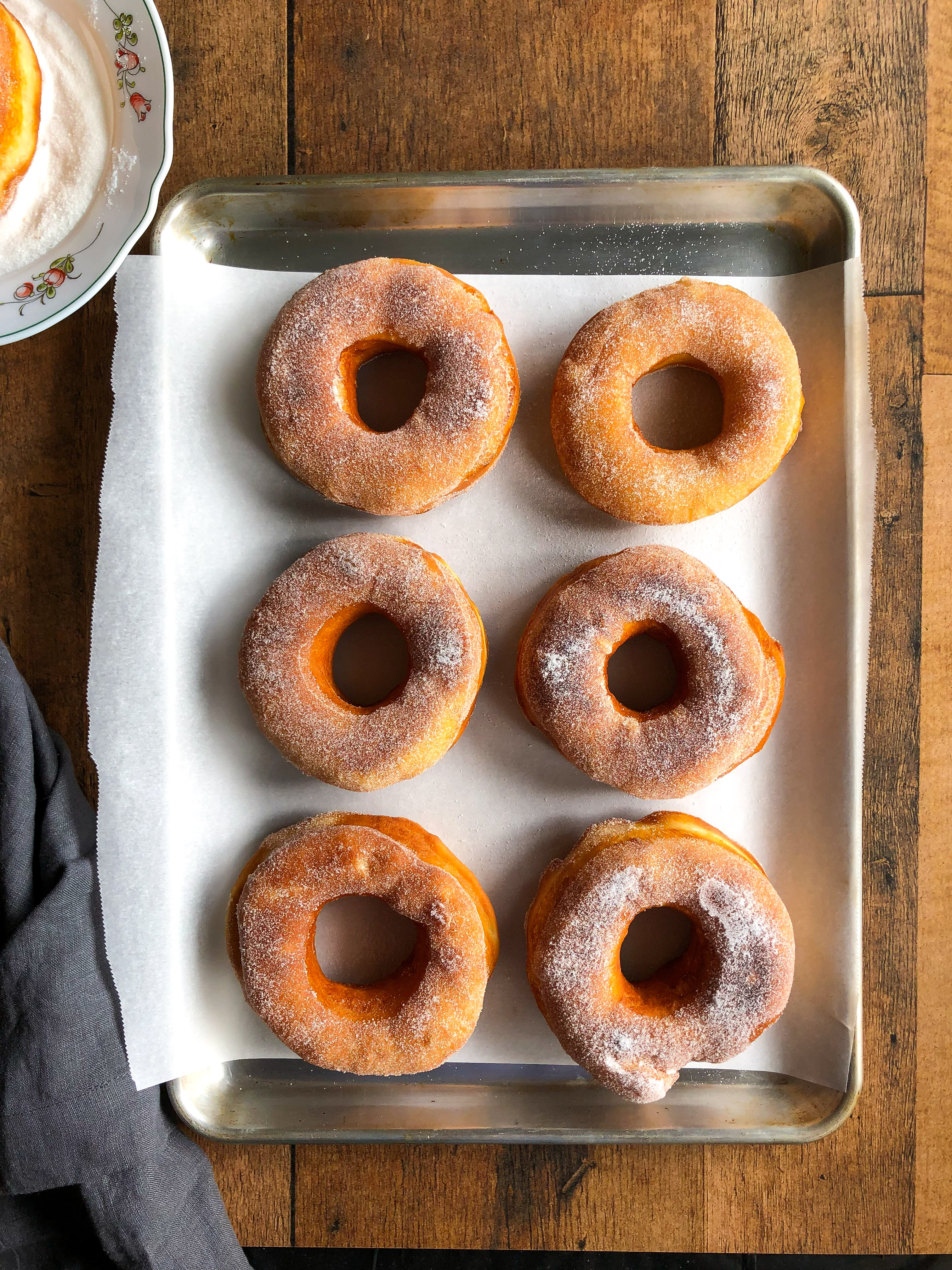
Extreme? Maybe. But we feel a special kinship with these sugar doughnuts. While in Greece, this was our typical breakfast. Our aunt would often be the first one up and she would head to the bakery down the road and return with a paper bag full of freshly made sugar doughnuts. With a glass of milk, and when we were older with a cup of Greek coffee, this was how we began our day; especially special because at home breakfast was never dessert! We were allowed one doughnut a day, and on the days when breakfast was fresh eggs instead, we got our doughnut fix on the beach. The beach in Kalamata always had a vendor walking up and down the pebbled shore, offering sugar doughnuts that he displayed on a long wooden stick. Think ice cream truck, Greek-style.

Because they knew how much we loved them, our parents tell us that they spent a few years trying to replicate these classic Greek doughnuts. We’re not sure that it was actually years, but even if it was, it was well worth it. This recipe is almost identical to the doughnuts we had in Greece. All that’s missing is our aunt, and the beach.
Helpful hints
We’ve made these doughnuts using a traditional doughnut cutter; you know, the kind with the two circular shapes attached to make the perfect doughnut shape. Although this works just fine, it does not give us the doughnuts we remember. The doughnuts in Greece are large, and lovely. So, we instead do what our parents do and use two circular cutters, one larger than the other, to make the doughnut, and the doughnut hole. We end up with fewer doughnuts that are approximately 4 1/2 inches in diameter. The perfect size we think. If you do make smaller doughnuts, keep in mind that you will likely need to decrease your cooking time.

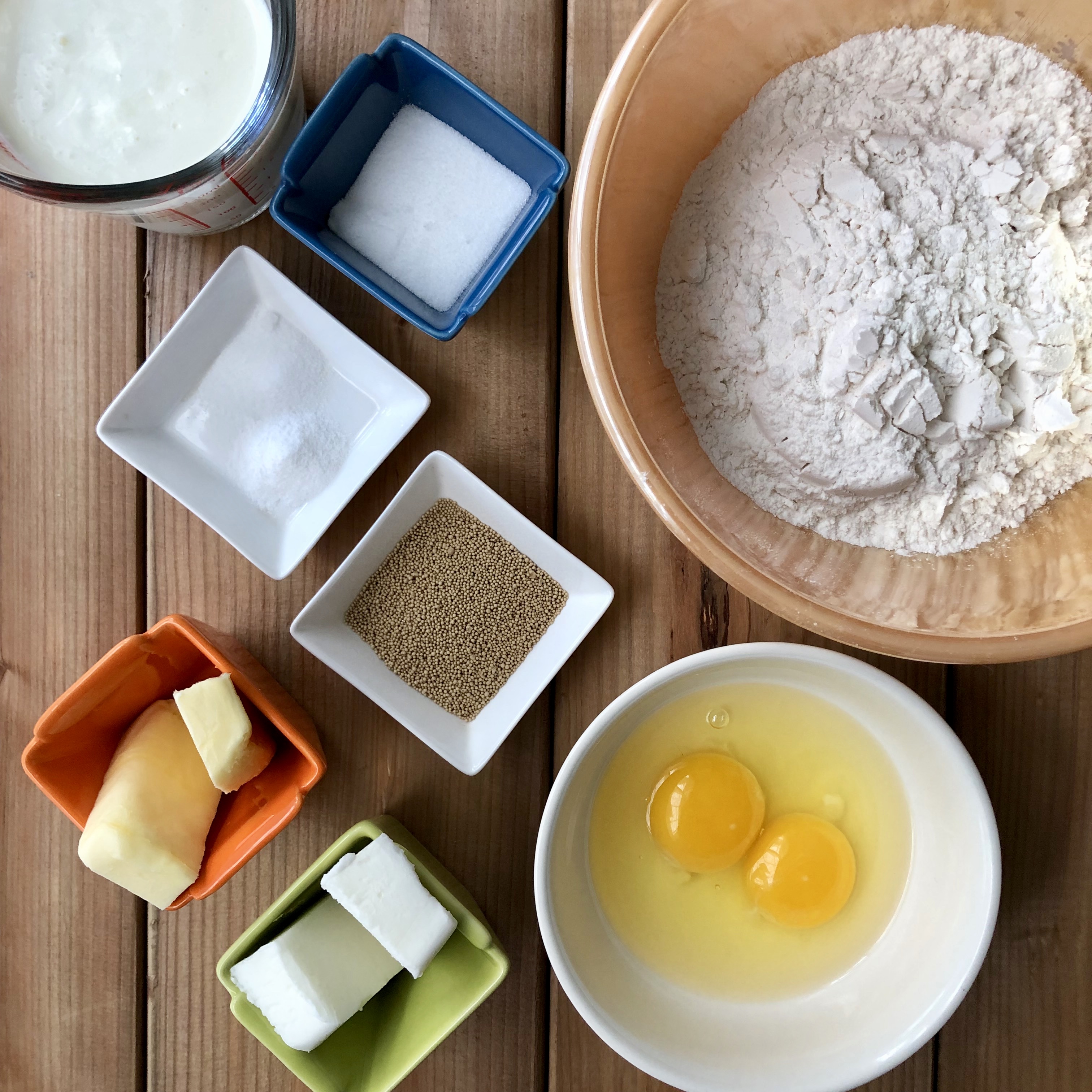


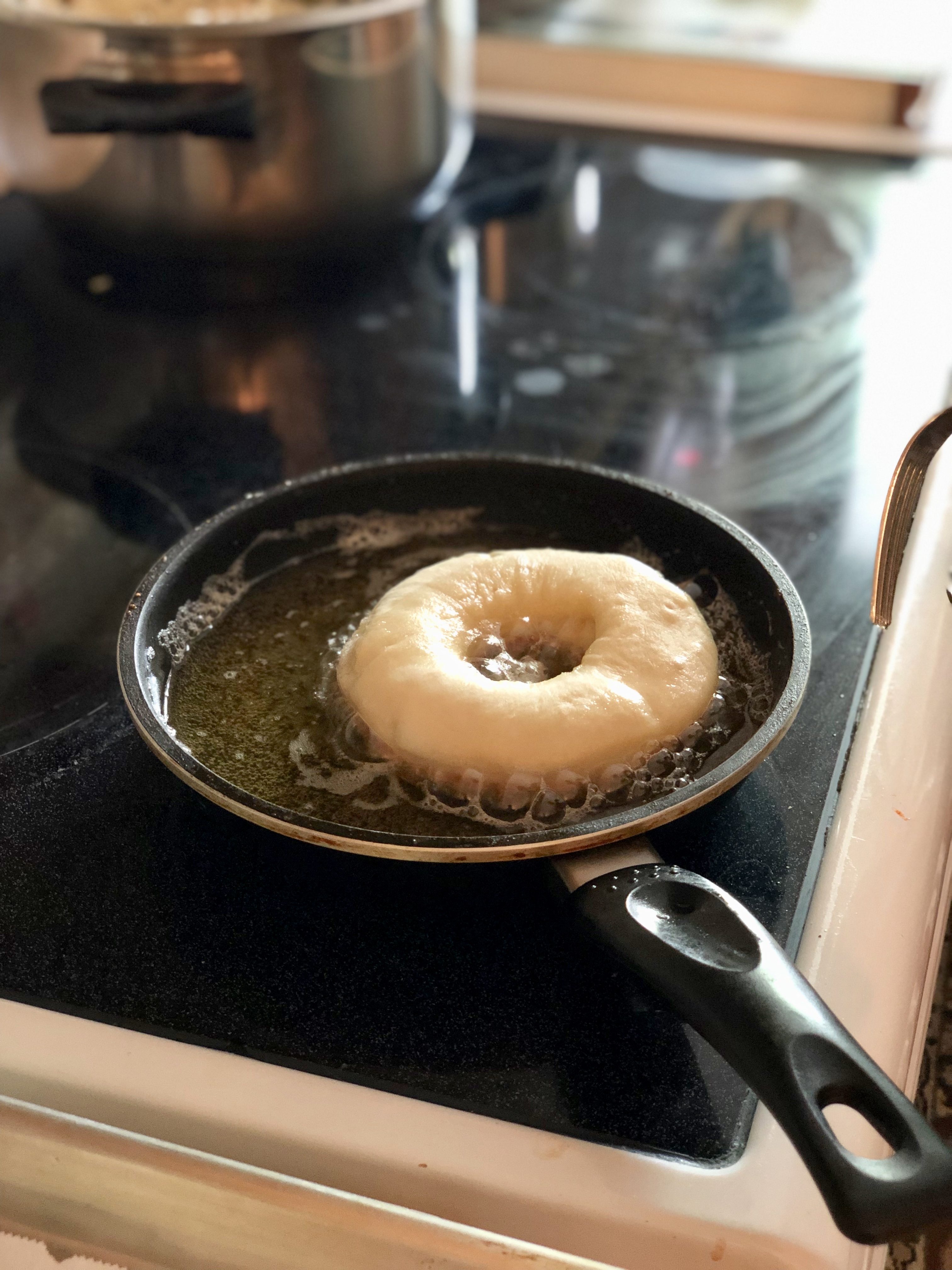
The use of shortening and butter in this recipe is pretty essential. The combination gives a great flavour and great texture. Remember, our parents rarely use either butter or shortening, so if they say you must for this recipe, you must.
You can purchase the superfine sugar called for in this recipe although it is often hard to find. Instead, do what our parents do and make your own. Instructions on how to do this are in the recipe notes in the recipe box.
These doughnuts are best eaten the day they are made, or the day after. You probably won’t have any left after that, so it doesn’t really matter that they are less great on day 3.

Pin this recipe, if you like it
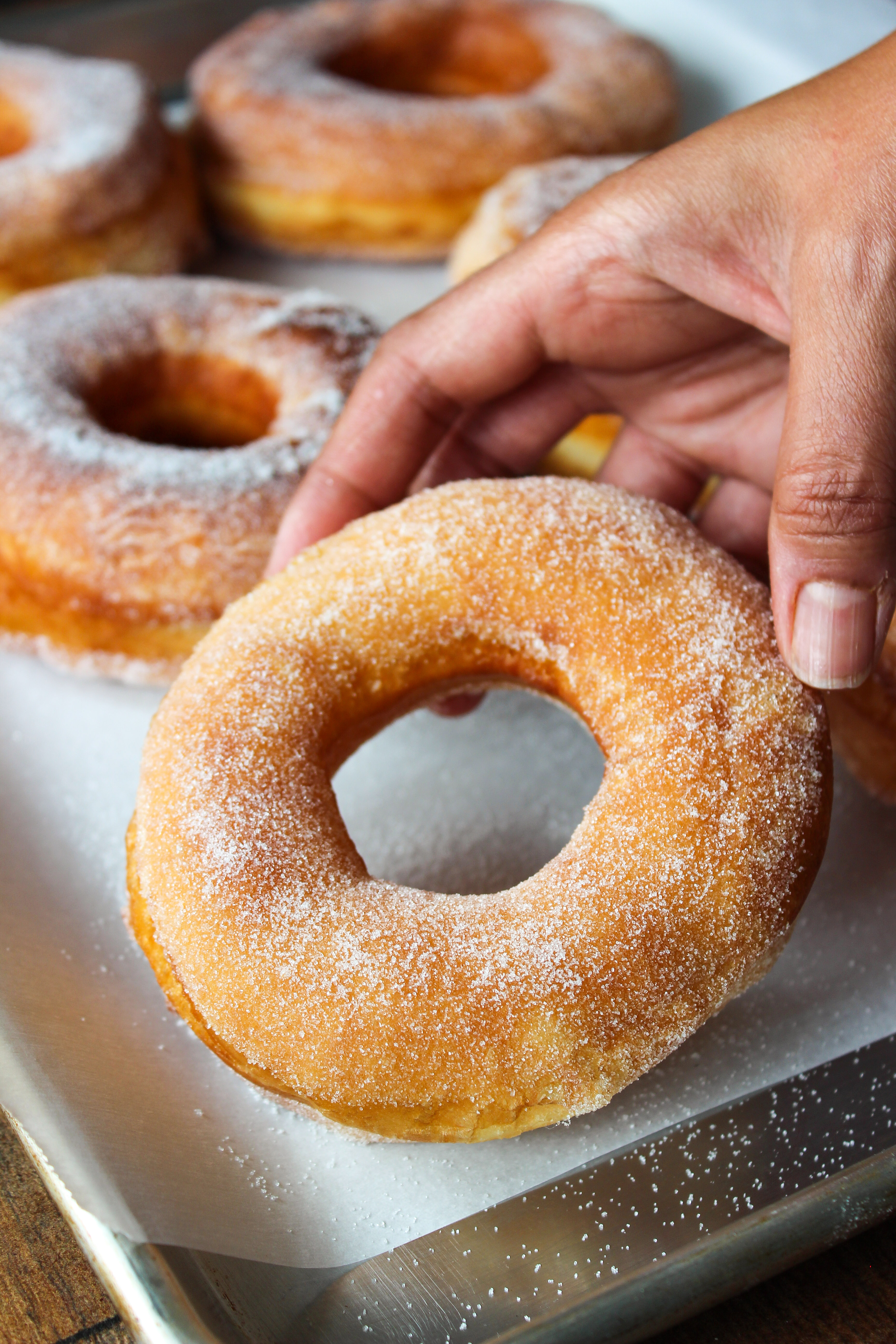
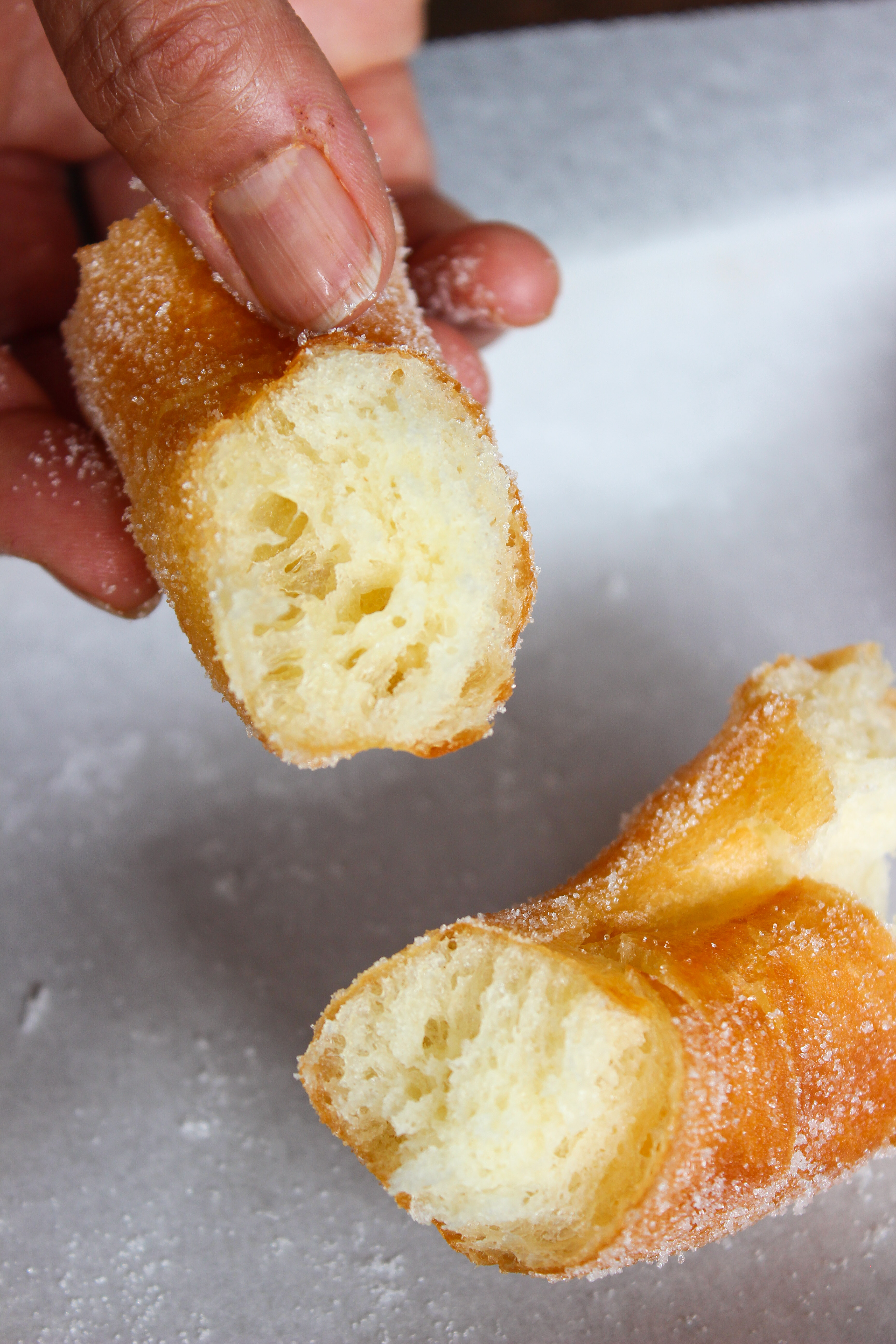
Tempted to try other Greek sweets? We’ve got some ideas!
We love hearing from you! If you have made our recipes, or if you have a question or comment, or simply want to say Hi!, please leave a comment below!
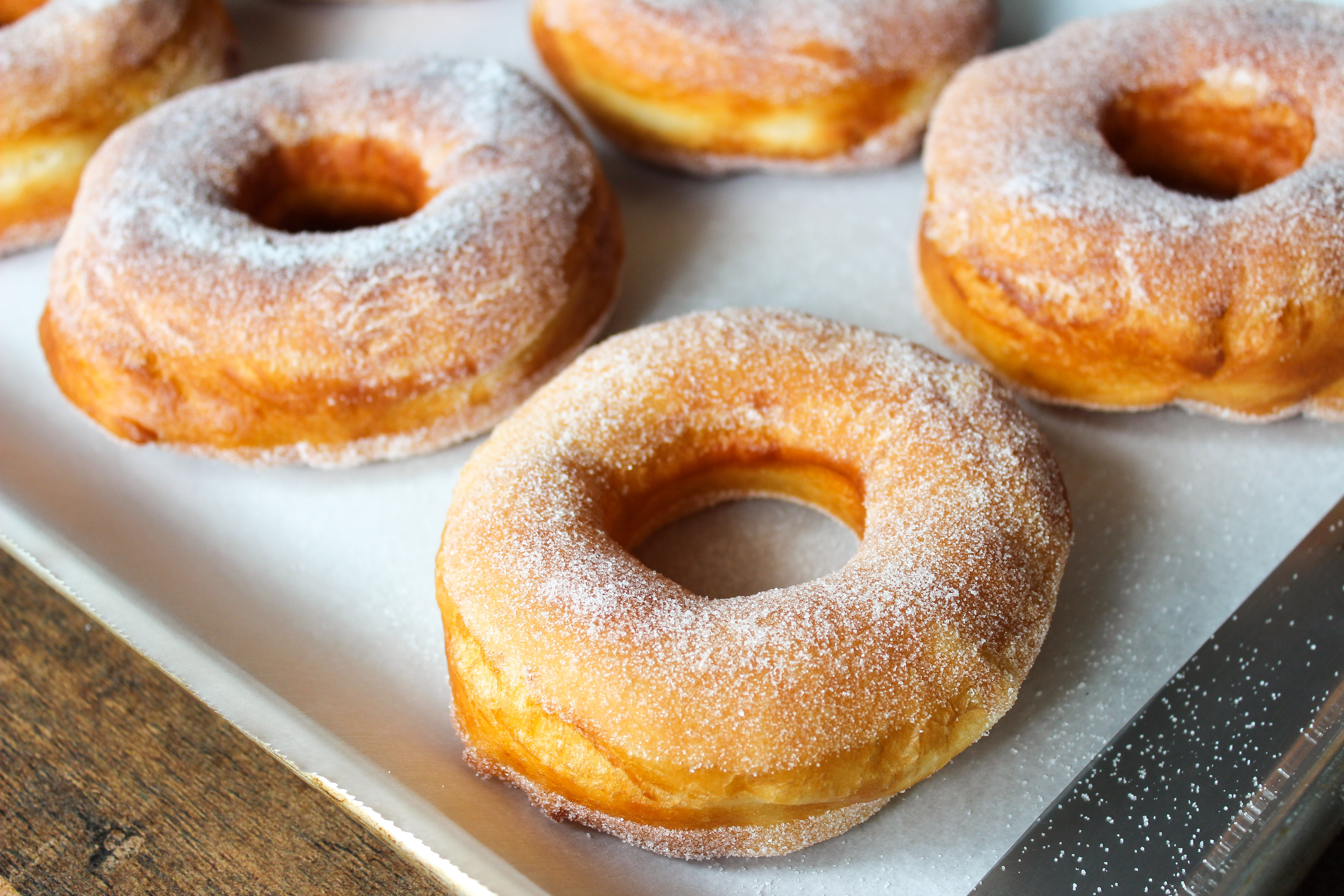
Hi love your blog and recipes. How much flour it’s says 2-2 3/4? Not sure is it supposed to say only 2 cups or is it 4 cups thank you
Hi Katerina. Thank you so much, we really appreciate that. For the flour, it’s 2 cups.. to 2 1/3 cups. It’s a range. You might only need 2 cups, but we added an additional 1/3 cup to the recipe, in case a little bit more was needed. Please let us know if you have any other questions.
Hi Katerina. Thanks for the message. The flour amount is listed as a range, because you may need to use a little less or a little more depending upon your flour, your altitude, humidity…etc. Thanks for pointing out that this may not be clear; we’ll make an adjustment so that it is less confusing. Happy baking!
“Donaaaaats, Donaaaaats”…I can still hear this everytime I visit a beach in Greece – even if there is no 70 year old doughnut man on the beach! I been searching the internet for the last few months for this recipe and was gobsmacked when I saw this on Mia Koupa! You have filled my Greek doughnut void. Keep the the fantastic work up on this blog. Its truly refreshing, entertaining and you portray Greek recipes and the Greek household and family in its true wonderful colours through food and culture. Well done! Mihalis.
Oh thank you for your comment and support Michael! We really appreciate it! We are so happy that you found our “donaaaats” recipe 🙂 🙂 Please let us know how you like them…we think you’ll be very happy with them 🙂 Thanks again!
Look so yummy. Have you tried cooking them in an Airfryer ?
Hi Gunnie! Thanks! We have not tried an air fryer. We don’t actually have one so have no idea how they would turn out. If you ever do try them, let us know how they end up 🙂
Leave a Reply